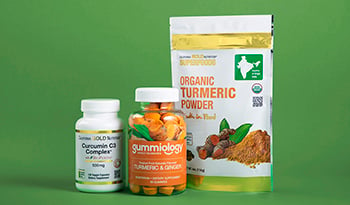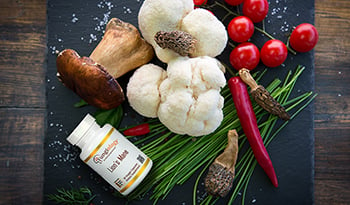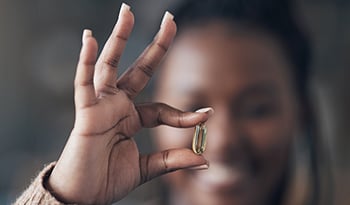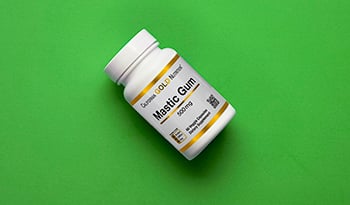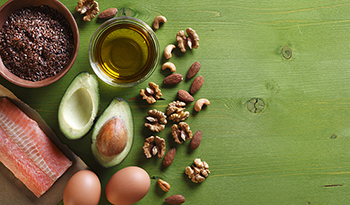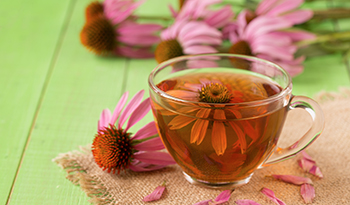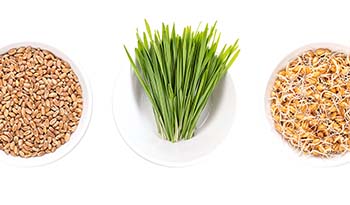Kereviz Tohumu Ekstresi ve Kan Basıncı

Kereviz havuç, maydanoz ve rezene ile birlikte şemsiye ailesinin bir üyesidir. Bugün gördüğümüz kereviz, tohumlarının bir zamanlar ilaç olarak çok değerli olduğu Akdeniz'e özgü yabani kerevizden kaynaklandı. Diğer birçok halk ilaçlarında olduğu gibi, modern araştırmalar bu yaygın sebzenin tıbbi değerini korumaktadır. Özellikle, bilim adamları kerevizin en güçlü iyileştirici faktörünü değerlendiriyorlar - 3-n-bütilftalid veya 3nBolarak bilinen bir bileşik.
3nB nedir?
3nB kerevize özgüdür ve sebzenin karakteristik lezzet ve kokusundan sorumludur. Sebzenin tıbbi etkilerinden bazılarını açıklamaya çalışan araştırmacılar tarafından kerevizin aktif bileşeni olarak keşfedildi. 3nB, Chicago Üniversitesi Tıp Merkezi'ndeki araştırmacılar onu kerevizin kan basıncını düşürücü etkisinden sorumlu bileşen olarak tanımladığında ilk olarak önemli bilimsel dikkat çekti.
Araştırma, bir hafta boyunca her gün çeyrek kilo kereviz yedikten sonra, kan basıncının 158'den 96'nın üzerinde 96'dan 82 üzerinden 118'lik normal bir değere düştüğünü gözlemleyen araştırmacının babalarından biri tarafından başlatıldı. Daha sonraki hayvan çalışmaları, çok az miktarda 3nB'nin kan basıncını yüzde 12 ila 14 düşürdüğünü ve ayrıca kolesterolü yaklaşık yüzde 7 azalttığını buldu.
3nB Kan Basıncını Nasıl Düşürür?
3nB'nin kan basıncını düşürücü etkisi, çeşitli faktörlerin bir sonucu gibi görünmektedir. Kan basıncı, kanınızın damarlarınızdan aktığı kuvveti ifade eder. Yüksek tansiyon genellikle kanınızdaki çok fazla sıvının ve esnek olmayan veya dirençli kan damarlarının sonucudur. Sodyum (tuz) retansiyonu kandaki sıvı hacminin artmasına neden olurken, arterlerin sertleşmesi ve stres sırasında salınan hormonlar esneklik kaybına veya kan damarlarının daralmasına neden olur. Başparmağınızı bir bahçe hortumunun üzerine koyarsanız, baş parmağınıza olan basınç ve hortumdan çıkan su akışının basıncı, musluğu aşağı çevirerek (sıvı hacmini azaltarak) veya hortumdan daha fazla su akmasına izin vererek (kabı genişleterek) azaltılabilir.
Yüksek tansiyonu tedavi etmek için doktorlar genellikle sıvı hacmini azaltmak için diüretikler (su hapları) reçete eder; ve kan akışının direncini azaltmak için arterleri gevşetmek için vazodilatörler veya kalbin pompalama etkisini azaltmak için beta blokerler reçete eder. 3nB, hem diüretik hem de vazodilatör olarak hareket ederek kan basıncını düşürmeye yardımcı olduğu gibi görünmektedir. 3nB ayrıca hayvanda ve testlerde gösterilmiştir. 3nB ayrıca hayvanlarda ve testlerde gösterilmiştir. 3nB ayrıca hayvanlarda ve testlerde gösterilmiştir. 3nB ayrıca hayvanlarda ve testlerde gösterilmiştir. 3nB ayrıca hayvanlarda ve testlerde gösterilmiştir. 3nB ayrıca hayvanlarda ve testlerde gösterilmiştir. 3nB ayrıca hayvanlarda ve testlerde gösterilmiştir. 3nB ayrıca hayvanlarda ve testlerde gösterilmiştir. 3nB ayrıca kolesterol seviyelerini düşürmek ve arteriyel plak oluşumunu azaltmak için tüp çalışmaları. Bu etki kan damarlarının elastikiyetini artırabilir ve böylece kan basıncı okumalarının düşmesine neden olabilir. Ek olarak, 3nB'nin beynin vasküler direnci kontrol eden alanları ve sistemleri üzerinde bir miktar etkisi olduğu görülmektedir.
Yüksek tansiyon tedavisinde 3nB'nin yararı, belirgin güvenliği ve diüretik olarak çok alışılmadık bir etki mekanizmasına sahip olmasıdır. Çoğu diüretik kandaki sodyumun potasyum oranını değiştirir ve sonuç olarak, çok fazla potasyum veya sodyum nedeniyle tehlikeli yan etkiler ortaya çıkabilir. Buna karşılık, 3nB bir diüretik görevi görür, ancak kandaki sodyumun potasyum oranını değiştirmez.
Kereviz ve kereviz tohumu özlerinin kan basıncını düşürücü etkisi üzerine yapılan araştırmalar oldukça ön hazırlıktır, ancak bazı insanlar kan basıncında önemli düşüşler kaydettiği için kesinlikle denemeye değer olduğunu düşünüyorum. Araştırmanın muhtemelen göstereceği şey, yüksek tansiyonu olan bazı kişilerin kereviz tohumu özüne cevap verirken diğerlerinin vermeyeceğidir. Bu olay olağandışı değildir - doktorlar size yüksek tansiyonda kullanılan geleneksel ilaçlarda benzer bir fenomen olduğunu söyleyecektir..
kereviz tohumu özünün yüksek tansiyonda kullanılan geleneksel ilaçlara göre bir başka gerçek avantajı, ilaçların beyne kan akışını azaltmasıdır. Bu etki inme olasılığını azaltmada yardımcı olsa da, genellikle insanları yorgun, depresif, baş dönmesi ve unutkan hissettirir. Kereviz tohumu özütünün ise hayvan çalışmalarında sadece felci önlemeye yardımcı olduğu değil, aynı zamanda kan akışını iyileştirdiği ve beyni koruduğu ve Ginkgo biloba özüne benzer bir şekilde beyin enerji üretimini arttırdığı gösterilmiştir. Kereviz tohumu özü ayrıca inmeyi simüle eden çalışmalarda hayvanlarda nörolojik ve beyin fonksiyonlarında dramatik iyileşme sağlamıştır. Ek olarak, hayvanlarda yaşam sürelerini önemli ölçüde arttırdığı gösterilmiştir.
3nB ile Başka Hangi Etkileri Belirtildi?
3nB hayvan çalışmalarında antikanser bitkisel besin ve detoksifikasyon yardımcısı olarak büyük umut vaat ediyor, ancak artrit, fibromiyalji ve gutta ağrı kesici olarak kullanımı en çok dikkat çekiyor.
Yüzde 85 3nB içerecek şekilde standartlaştırılmış kereviz tohumu özleri, artritik ve kas ağrıları ve ağrıları için kullanılan genel terim olan romatizm tedavisinde değerlendirilmiştir. Bu çalışmada, 3nB'nin etkinliği, artrit ve kas ağrısında kullanılan geleneksel ilaçların etkinliğini ölçmek için kullanılan köklü klinik protokollerle değerlendirildi. Bu protokoller, istatistiksel olarak ve bireysel karşılaştırmalar için değerlendirilebilen objektif klinik ağrı ölçümlerine izin verir. Romatizmanın kronik, dalgalanan doğası nedeniyle, çalışma 3nB takviyesi olan ve olmayan sonuçları karşılaştırdı.
12 haftalık çalışma sırasında, osteoartrit, osteoporoz veya guttan muzdarip 15 denek günde iki kez 34 mg kereviz tohumu özü aldı. Her deneğin ağrısı yaklaşık 10 yıldır sürekli veya sürekli olarak mevcuttu ve ev işlerinin, hobilerin ve diğer faaliyetlerin yerine getirilmesini engelleyen eklem hareketliliği ve ağrısının eksikliğine yol açtı.
Çalışmanın sonuçları son derece olumlu ve istatistiksel olarak oldukça anlamlıydı. Bu sonuçların plasebo etkisinden kaynaklanma şansı 1000'de birinden azdır. Kereviz tohumu özünü aldıktan üç hafta sonra, deneklerin ağrı puanlarındaki ortalama azalma yüzde 68 idi ve bazı denekler ağrıdan yüzde 100 rahatlama yaşadı. Çoğu denek altı haftalık kullanımdan sonra maksimum fayda sağladı, ancak bazıları ekstrakt ne kadar uzun süre kullanıldıkça iyileşmeler fark etti. Ayrıntılı kan kimyası ve deneklerin klinik değerlendirmesi herhangi bir yan etki göstermedi. Birçok denek kereviz tohumu ekstraktının idrar söktürücü bir etki yarattığını fark etti, ancak sodyum ve potasyum dengelerinde herhangi bir değişiklik kaydedilmedi.
Bu küçük pilot çalışmadaki olumlu sonuçlara dayanarak, 70 hasta daha büyük bir çalışma yapılmıştır. Denekler üç hafta boyunca günde iki kez 75 mg kereviz tohumu özü aldı. Bu yüksek dozajda, denekler pilot çalışmadakinden daha iyi sonuçlar bildirdiler. Ağrı skorlarında istatistiksel ve klinik olarak anlamlı azalmalar kaydedildi, hareketlilik ve yaşam kalitesinde iyileşmeler kaydedildi. Yine, sodyum ve potasyum dengesinde herhangi bir değişiklik olmaksızın diüretik etki dışında hiçbir yan etki kaydedilmedi. Kereviz tohumu özü gut hastaları için özellikle yararlı görünüyordu, çünkü 3nB, ksantin oksidaz enzimini inhibe ederek guta neden olan ürik asit üretimini azalttığı görülüyor.
Uygun Dozaj Nedir?
Avustralya'da 100.000'den fazla kişi şu anda herhangi bir yan etki raporu olmaksızın yüzde 85 3nB olarak standartlaştırılmış bu tescilli kereviz tohumu özünü kullandı. Çalışmalardan elde edilen bilgilere ve klinik deneyime dayanan mevcut dozaj önerileri şunlardır:
Eklem ve kas ağrısının giderilmesi için (osteoartrit, romatoid artrit ve fibromiyalji nedeniyle oluşan ağrı dahil): Günde iki ila üç kez bir tablet.
Gut için: Günde iki kez iki tablet. NOT: Ürik asit kristalleri çözünmeye başladıkça gutlu kişilerde ilk kan ürik asit ölçümleri artabilir.
Çalışma sonuçları, kereviz tohumu özü kullanıldığı sürece ağrıyı uzak tuttuğunu göstermektedir. Ancak durdurulursa, ağrı tekrarlama eğilimindedir.
Yüksek Tansiyon İçin Ne Kadar Almalıyım?
Benim tavsiyem ya günde sekiz kaburga kereviz tüketmek ya da günde iki kez 75 ila 150 mg dozunda yüzde 85 3nB ve diğer kereviz ftalitleri içerecek şekilde standartlaştırılmış kereviz tohumu özü almaktır.
Geleneksel Anti-inflamatuar İlaçlarla Kereviz Tohumu Ekstresi Alabilir miyim?
Evet. Geleneksel ilaçlarla herhangi bir olumsuz etkileşim yok gibi görünmüyor.
Herhangi Bir Kontrendikasyon Var mı?
Kereviz tohumu ekstraktının hamile kadınlar üzerindeki etkileri değerlendirilmediğinden, genellikle hamilelik veya emzirme döneminde kullanılmaması önerilir. Şu anda başka herhangi bir kontrendikasyon bilinmemektedir. Önleyici bir öneri olarak, Coumadin (warfarin) ilacını alan kişilerin kereviz tohumu özü kullanmaya başlarken doktorları tarafından yakından izlenmelerini tavsiye ederim.
3nB Tüm Bu Faydaları Sağlamak İçin Nasıl Çalışır?
Mevcut tüm araştırmalara dayanarak, 3nB'nin vücudun kontrol sistemlerinin çoğu üzerinde, özellikle prostaglandin sistemi üzerinde derin bir etki yarattığı açıktır. Prostaglandinler, iltihaplanma, ağrı ve şişlik, kan basıncı ve kalp, sindirim ve böbrek fonksiyonlarını düzenlemek dahil olmak üzere birçok önemli vücut sürecini kontrol eden kimyasallardır.
Prostaglandin sistemi üzerindeki 3nB için belirtilen etkilerden bazıları oldukça benzersizdir. Prostaglandinlerin üretimini, onları üreten enzimleri bloke ederek basitçe inhibe etmek yerine - aspirin veya daha pahalı ve seçici Cox-2 inhibitörlerinin yaptığı şeydir - 3NB, prostaglandin sistemindeki dengeyi yeniden sağlamaya yardımcı oluyor gibi görünüyor. Bunu tam olarak nasıl başardığı hala bir gizem. İlaç şirketleri, patentli ve büyük bir kâr karşılığında satılabilen ilaçlar geliştirmek için 3nB'nin benzersiz etkilerini araştırıyorlar. Ancak bu araştırma çizgisi gerekli gibi görünmüyor.
Referanslar:
- Le QT ve Elliott WJ: Kereviz yağının hipotansif ve hipokolesterolemik etkileri bUPh'a bağlı olabilir. Clin Res 1991; 39:173 A.
- Tsi D ve Tan BKH: Spontan hipertansif sıçanlarda 3-n-bütilftalidin kardiyovasküler farmakolojisi. Fitoterapi Araştırması 1997; 11:576-82.
- Le QT ve Elliott WJ: Kan basıncı ve serum kolesterolünün kereviz yağının bir bileşeni olan 3-n-bütilftalid ile doz-yanıt ilişkisi. Clin Res 1991; 39:750 A.
- Mimura Y, Kobayashi S, Naitoh T, Kimura I ve Kimura M:Fare aort düz kas hücrelerinin primer kültürlerde proliferasyonunda inhibisyonun yeterliliği ve ilerlemesi ile ilgili sentetik bütilideneftalid türevleri arasındaki yapı-aktivite ilişkisi. Biol Pharm Bull 1995; 18:1203-6.
- Yu SR, Gao NN, Li LL, Wang ZY, Chen Y ve Wang Wn: 3-butil ftalidin sıçan beyin hücreleri üzerindeki koruyucu etkisi.Yao Hsueh Hsueh Pao 1988; 23:656-61.
- Chong ZZ ve Feng YP: dl-3-n-butilftalid, sıçanlarda deneysel subaraknoid kanamadan sonra bölgesel serebral kan akışını iyileştirir. Chung Kuo Yao Li Hsueh Pao 1999; 20:509 - 12.
- Chong ZZ ve Feng YP: dl-3-n-butilftalid, sıçanlarda fokal serebral iskemiden sonra reperfüzyon kaynaklı kan-beyin bariyeri hasarını hafifletir. Chung Kuo Yao Li Hsueh Pao 1999; 20:696-700.
- Yan CH, Feng YP ve Zhang JT: Sağ orta serebral arter tıkanıklığı sıçanlarında dl-3-n-butilftalidin bölgesel serebral kan akışı üzerindeki etkileri. Chung Kuo Yao Li Hsueh Pao 1998; 19:117-20.
- Lin JF ve Feng YP: Dl-3-n-butilftalidin farelerde fokal serebral iskemi ve intrasinaptozom kalsiyum sonrası gecikmiş nöronal hasar üzerindeki etkisi.Yao Hsueh Hsueh Pao 1996; 31:166-70.
- Liu XG ve Feng YP: Dl-3-n-butilftalidin fokal iskemiye maruz kalan sıçanlarda iskemik nörolojik hasar ve anormal davranış üzerindeki koruyucu etkisi.Yao Hsueh Hsueh Pao 1995; 30:896-903.
- Zhang LY ve Feng YP: dl-3-n-butilftalidin (NBP) SHRSP farelerinde yaşam süresi ve nörolojik eksiklik üzerindeki etkisi.Yao Hsueh Hsueh Pao 1996; 31:18-23.
- Zheng G, Kenney PM, Zhang J ve Lum KT: Kereviz yağından elde edilen doğal ftalitler tarafından farelerde benzopiren kaynaklı ön mide kanserinin kemoprevensiyonu. Nutr Kanser 1993; 19:77-86.
- Soundararajan S ve Daunter B: Ajvine: Romatizmal ağrıda ağrının giderilmesi için pilot biyomedikal çalışma. Tıp Fakültesi, Queensland Üniversitesi, Brisbane, Queensland, Avustralya, 1991- 92.
- Venkat S, Soundararajan S, Daunter B ve Madhusudhan S. Ayurveda tıbbının romatizmal hastalıkların tedavisinde kullanımı. Ortopedi Bölümü, Kovai Tıp Merkezi ve Hastaneler, Coimbatore, Hindistan, 1995.
- Hu D, Huang XX ve Feng YP: Dl-3-n-butilftalidin (NBP) dört damarlı tıkanma farelerinde striatum hücre dışı sıvısındaki pürin metabolitleri üzerindeki etkisi.Yao Hsueh Hsueh Pao 1996; 31:13-7
- Chong ZZ ve Feng YP: Fokal serebral iskemi ve reperfüzyon sırasında sıçan beyninde dl-3-n-butilftalidin TXB2 ve 6-keto-PGF1 alfa üretimi üzerindeki etkileri. Chung Kuo Yao Li Hsueh Pao 1997; 18:505-8.
FERAGAT:SAĞLIK MERKEZİ tanı koymayı hedeflememektedir...













































































 İçindekiler
İçindekiler



